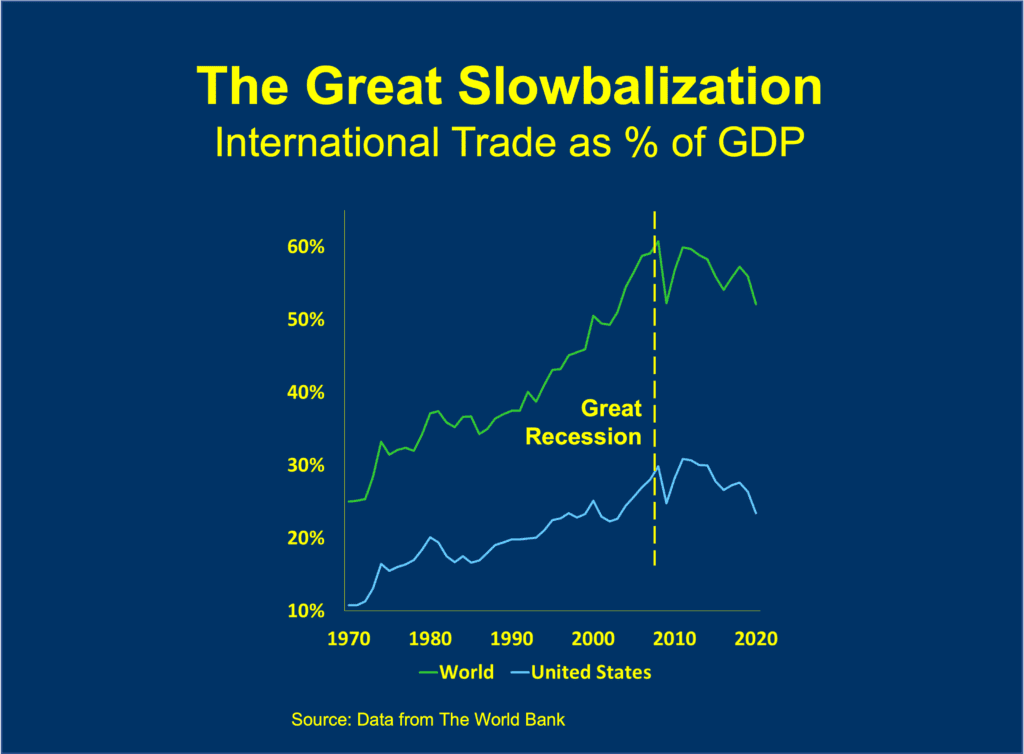Global Supply Chains Have Been Fundamentally Changing Since 2008

An interesting article in The Economist points out that while we think of the pandemic as having triggered sudden changes in global supply chains, many recent changes just represent an acceleration of trends that had been underway since the 2008 Great Recession. I had been aware of many of the changes in isolation, but framing them all together as part of a single phenomenon provides a fresh perspective. It also suggests that things aren’t going to return to normal, because what is normal is a moving target.
Here are my key takeaways from the article:
- The decline in world trade (the “slowbalization”) started in 2008. World trade as a percent of global GDP increased from 37% to 61% in the 20 years prior to 2008. From 2008 to 2020 it dropped to 52%. In the above chart, I augmented the article chart with U.S. data from The World Bank. The trend is similar for the U.S., with trade increasing from 19% to 30% through 2008, and then declining to 23% through 2020. The World Bank’s data stops at 2020; trade has likely declined further.
- The reasons for the long-term decline include a narrowing of the wage differential between high-wage and low-wage countries. In addition, automation has reduced the importance of wages to the overall cost of manufactured goods. Both these changes have reduced the incentive to import foreign goods.
- Related changes were also under way long before the pandemic, such as a slowing down of investment in China and a shift of focus to elsewhere in Asia, such as the Philippines, India, and Vietnam. This shift has been driven primarily by lower costs in such countries.
- What is new since the pandemic and the Ukraine war are actions by countries and companies to decrease supply chain risk and increase self-reliance. In the past, disruptions had triggered talk of decreasing risk, but not much action.
- Countries are adopting policies to protect certain industries, particularly strategic ones such as defense, public health supplies, energy, semiconductors, computers, and electric car batteries.
- Individual companies are taking actions to decrease risk such as moving operations to different countries, vertically integrating, dual-sourcing, and increasing inventory buffers.
When the pandemic and Ukraine war are over, perhaps some of the recent changes to supply chains will slow down. But supply chains are undergoing longer-term and more profound changes, ones that are likely to continue for quite some time.
To Learn More
If you’d like to discuss how New Horizon can help your manufacturing, wholesale, retail, or foodservice company plan your supply chain more effectively, contact us – we’d love to talk.


